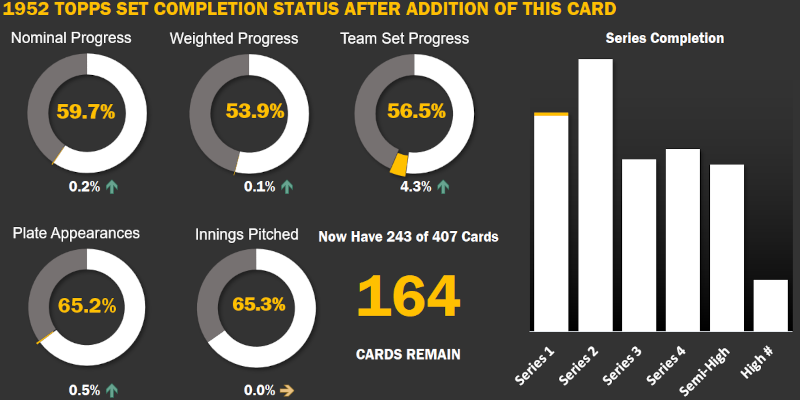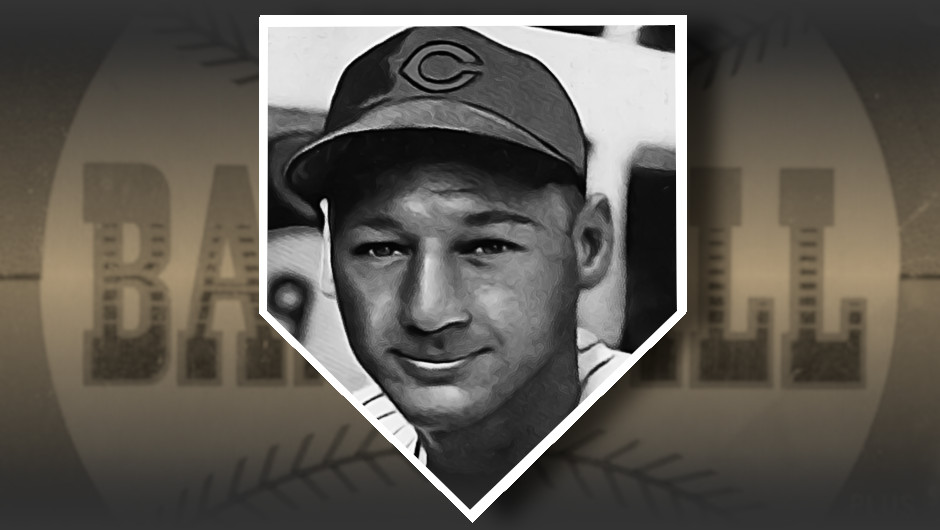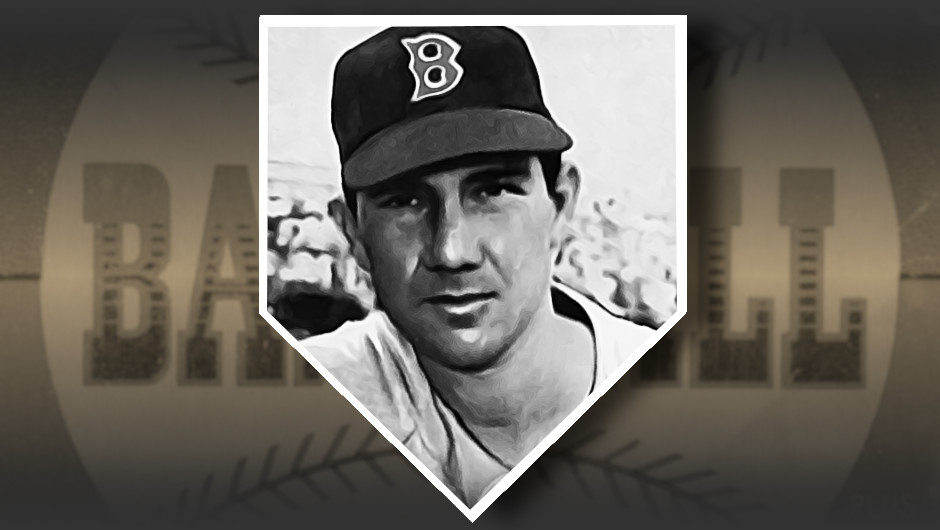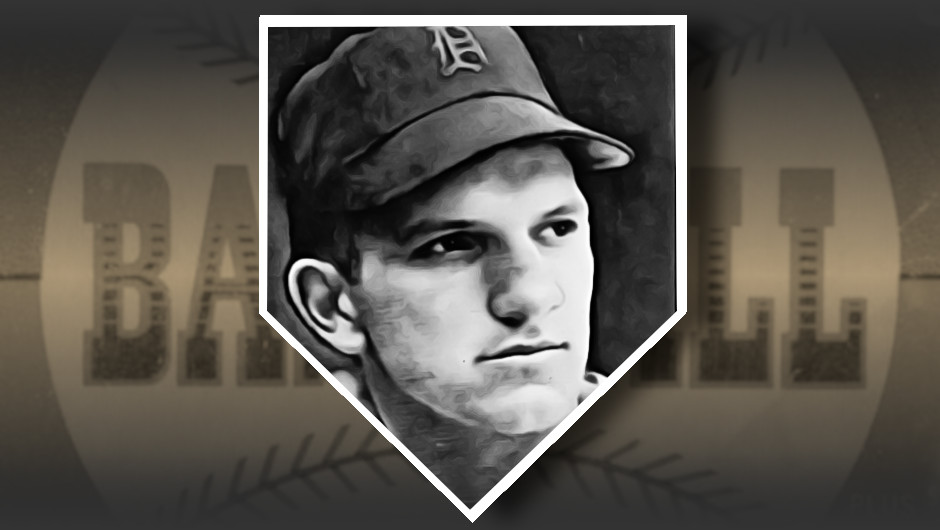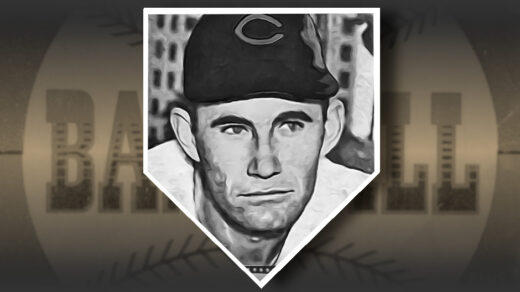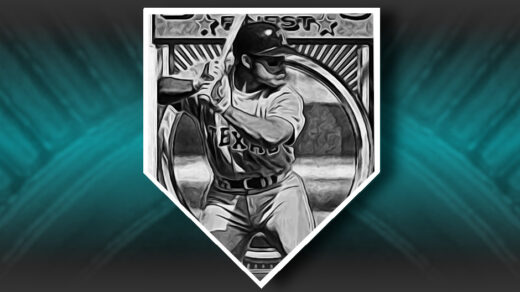Here’s an interesting way to get into professional baseball:
- Get exceptionally good at football.
- Enlist in the Navy.
- Hang out with Bob Feller.
- Casually be so good at baseball that he makes you the only amateur on a Navy team stocked with ringers pulled directly from major league teams.
- Ignite a bidding war between the Indians and the Tigers at the conclusion of your service.
That plan of action seemed to work for Johnny Groth when he followed it to a spot in the outfield for the Detroit Tigers.
For a while it looked like a genius move by the team. He batted .319 for the organization’s Class A affiliate and improved to .340 the next year at AAA. He hit 30 triples and 40 home runs across those seasons and even got into a handful of games for the parent club in year end cups of coffee assignments. He batted .471 in his yearend stint with Detroit in 1948, cementing his place in the 1949 lineup.
He did okay after that, batting above .300 a few times but not really standing out in the way he had previously done while clobbering minor league pitching. The drop-off in production may have been the result of an errant Billy Pierce beanball in 1953. Detroit’s front office imploded in 1952, starting a chain reaction of trades that sent Groth to four different teams before bringing him back for the final seasons of his career.
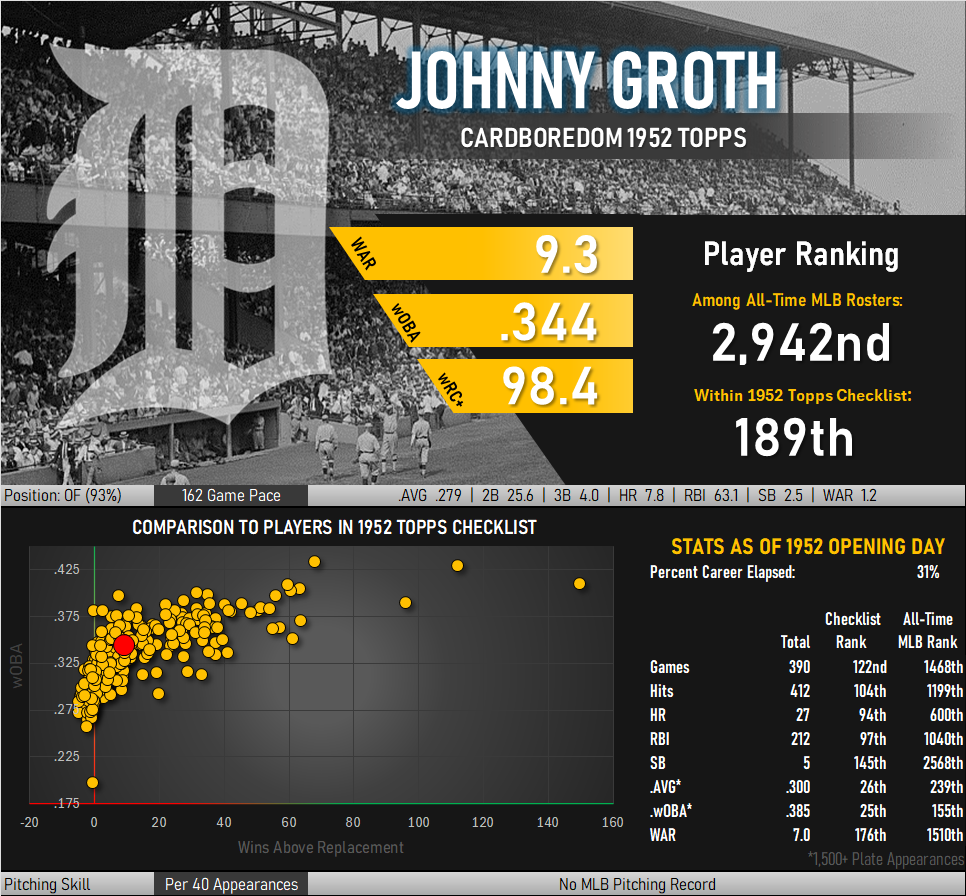
What can you say about a guy whose career stats look fairly middle of the pack (ranked #189 out of 407 players in the ’52 Topps checklist)? How about this mundane sounding number that we seem to take for granted: Johnny Groth finished his career with 1,064 career hits. At the time of his retirement the 1K Hit Club contained only 558 names. 65 years later we’re up to about 1,400 players with that many hits. Groth may have ended up with mundane numbers at the plate, but the effect of continuing to play at this level for more than a decade puts him in the upper 10% or so of all time batters. Throw in some very sharp defensive work in the outfield and that’s about all you can ask for.
1952 Topps Set Building Progress
The Johnny Groth baseball card sitting in my in-progress 1952 Topps set looks pretty good from the front. It has typical 1952 centering and EX corners, which are nothing to complain about. Tipping the card over to the back reveals the reason why the cost of this nice little piece of cardboard was just a few bucks: A stain left from a piece of tape that had once held it to a scrapbook. Kind of like his career, the card started off promising and ended up being enjoyable even if not satisfying on a technical level.

